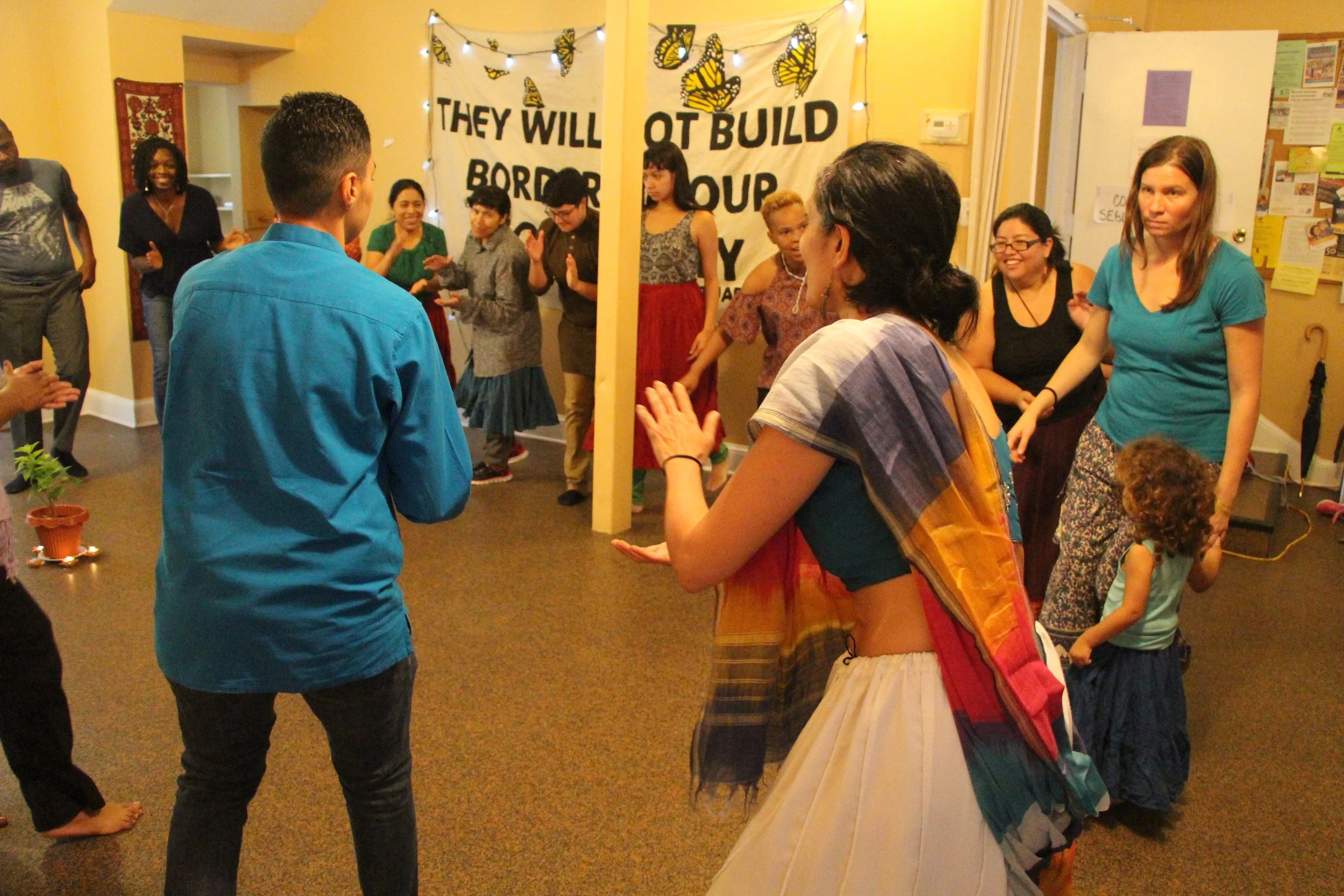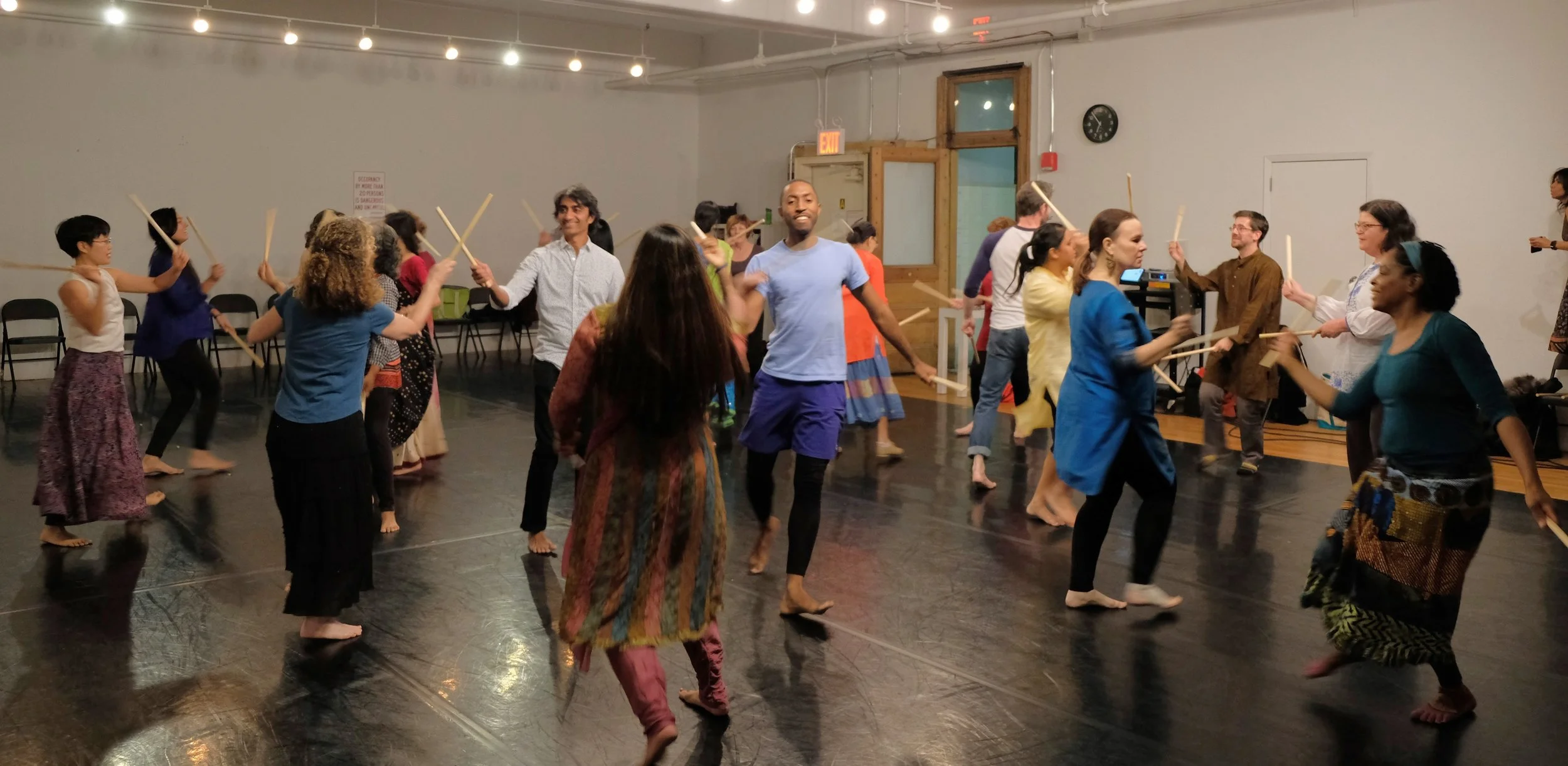Image: Freedom. Safety. NOW. with South Asian Women’s Creative Collective, 2013.
Circle For Democracy Video Showcase.
Community As Studio Symposium
NYU APIA Institute
CIRCLE FOR DEMOCRACY
Circle For Democracy uses circle dance, somatics, and civic education to build an embodied connectivity between people and between individuals and civil society, to activate people toward participation in civic life and the democratic process.
In the United States and abroad, we are facing devastating attacks on democratic processes and institutions. In addition, our collective absorption in social and streaming media and “breaking” news has fostered a societal numbness and a social / political fragmentation. Where possible, legal and political efforts are underway to push back on these violations. But what avenues are available for citizens to participate meaningfully, that address polarization and allow regular folk to engage in the democratic process sustainably? How do we support natural energy of students and young people to grow into sustained action in the civic sphere?
To halt seemingly unstoppable anti-democratic forces, we need more than lawsuits and town halls. We need an embodied engagement of our body politic that cuts through the intense disembodiment of our remote, digitized, polarized society. We need a form of activation that deploys our deepest indigenous practices to help us physicalize our shared existence and desired destiny: dance (collective movement in rhythm) and ritual (collective process).
Dance In The Round at MLOV-DC (Many Languages One Voice)
In Circle For Democracy, I employ circle dance based on Gujarati garba and raas, somatics based on the Tamalpa LifeArt Processs® developed by iconic artist-thinkers Anna Halprin and Daria Halprin, and group movement improvisation to offer physical experiences of principles of a well-functioning plural democracy: inclusion, participation, cooperation, freedom for the individual, care, and joy. I also invite presentations by Guest-Activators from civil-society organizations to discuss their work; share information on societal issues, policies, and campaigns, and identify avenues for civic engagement in 2 focus areas, specifically opportunities for us to participate in social change as a class. Through lecture, readings, research, and dialogue, we build kinesthetic and cognitive connections between the class’s embodied learning and active civic participation.
Circle For Democracy asserts that participation in a group movement practice can be a vehicle to physically experience human interconnectivity and interdependence, and the society we want to create. These physical experiences allow participants to build an embodied relationship between themselves and the collective and to generate a vibrant group energy. That energy then needs a pathway, so by combining that embodied learning with education about pathways for civic participation, we can help participants move beyond “awareness”—into action.
Inquire at info@parijatdesai.org for details.



